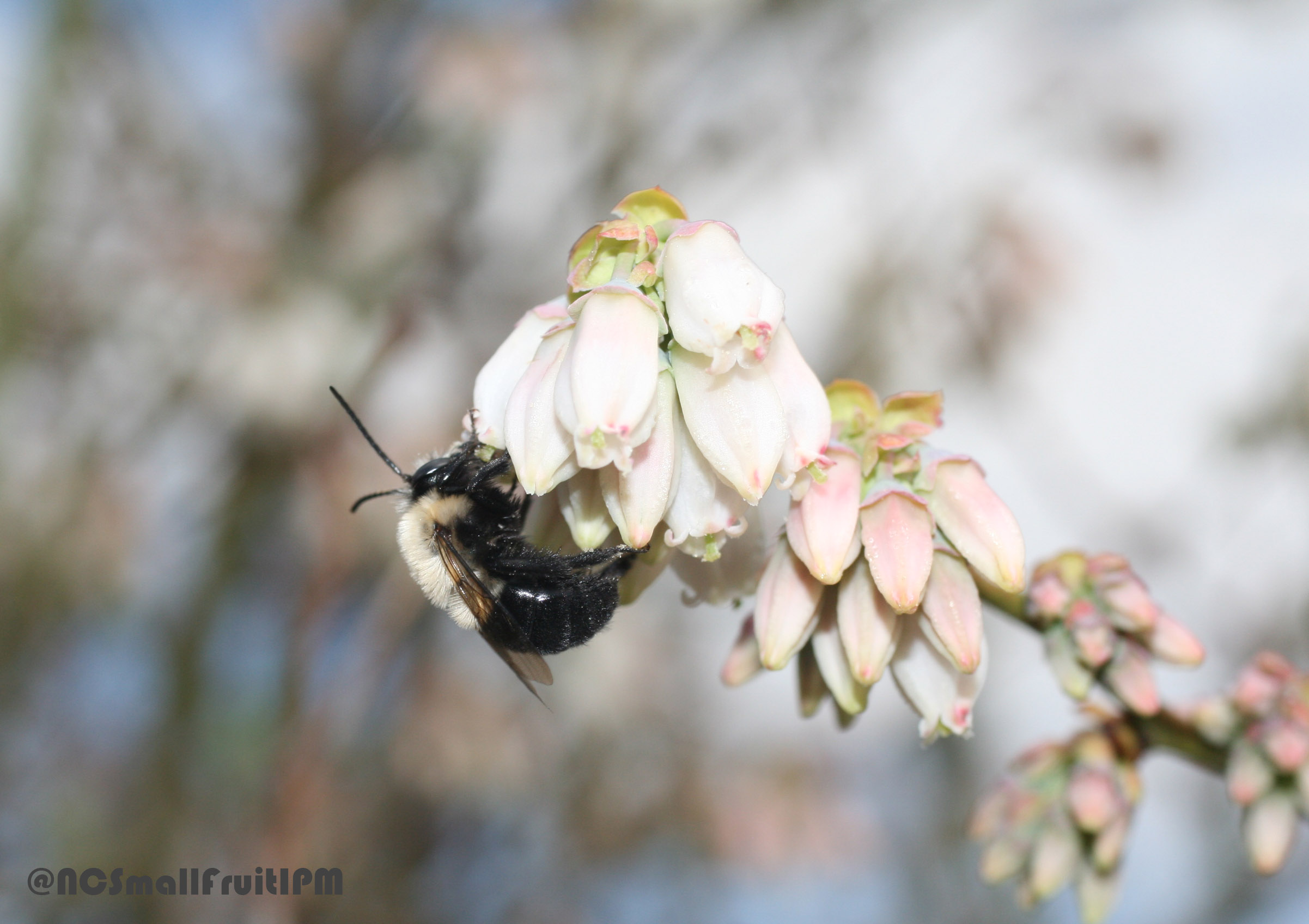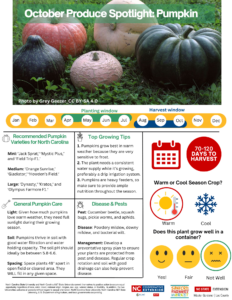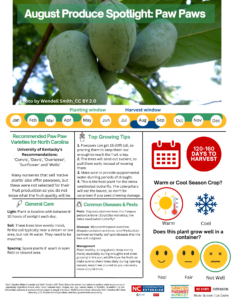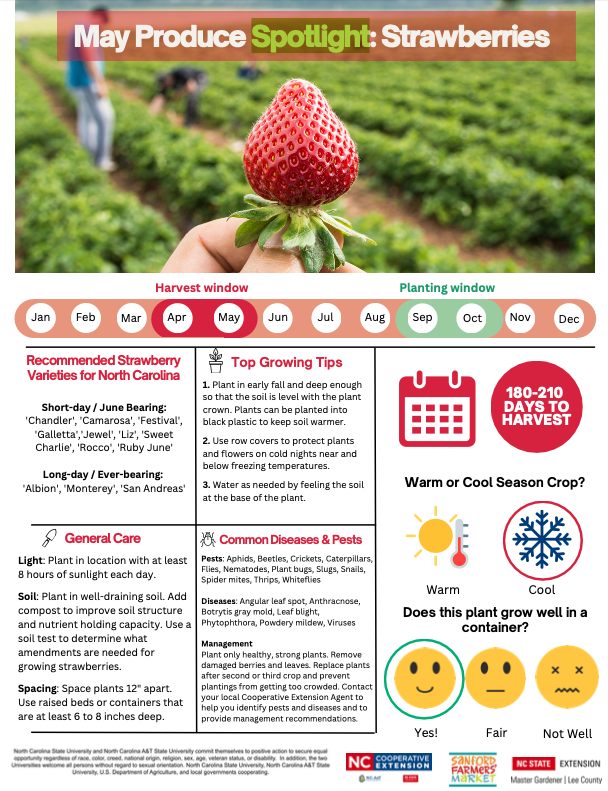Produce Spotlights and Pollinator Pairings
go.ncsu.edu/readext?936805
en Español / em Português
El inglés es el idioma de control de esta página. En la medida en que haya algún conflicto entre la traducción al inglés y la traducción, el inglés prevalece.
Al hacer clic en el enlace de traducción se activa un servicio de traducción gratuito para convertir la página al español. Al igual que con cualquier traducción por Internet, la conversión no es sensible al contexto y puede que no traduzca el texto en su significado original. NC State Extension no garantiza la exactitud del texto traducido. Por favor, tenga en cuenta que algunas aplicaciones y/o servicios pueden no funcionar como se espera cuando se traducen.
Português
Inglês é o idioma de controle desta página. Na medida que haja algum conflito entre o texto original em Inglês e a tradução, o Inglês prevalece.
Ao clicar no link de tradução, um serviço gratuito de tradução será ativado para converter a página para o Português. Como em qualquer tradução pela internet, a conversão não é sensivel ao contexto e pode não ocorrer a tradução para o significado orginal. O serviço de Extensão da Carolina do Norte (NC State Extension) não garante a exatidão do texto traduzido. Por favor, observe que algumas funções ou serviços podem não funcionar como esperado após a tradução.
English
English is the controlling language of this page. To the extent there is any conflict between the English text and the translation, English controls.
Clicking on the translation link activates a free translation service to convert the page to Spanish. As with any Internet translation, the conversion is not context-sensitive and may not translate the text to its original meaning. NC State Extension does not guarantee the accuracy of the translated text. Please note that some applications and/or services may not function as expected when translated.
Collapse ▲North Carolina farmers and producers are some of the hardest working folks, and the literal fruits of their labor sustain our communities near and far. If it weren’t for our pollinator neighbors though, those fruits would not come!
Pollinators such as bees, birds and bats, contribute to 35 percent of the world’s total crop production, pollinating 87 of 115 leading food crops worldwide. Close to 75 percent of the world’s crops producing fruits or seeds for human use depend, at least in part, on pollinators. Pollination enables the production of an abundance of diverse and nutritious fruit, vegetable, and nut species (UNFAO).
The Sanford Farmers’ Market and the Extension Master Gardeners of Lee County have teamed up to develop a guide for home gardeners to learn how to grow some of their favorite produce while also learning about the important pollinators that help pollinate the plants they come from or benefit from that plant just being alive in its ecosystem. Know it to grow it!
Produce Spotlight & Pollinator Pairing for October 2023: Pumpkins and Squash Bees (authored by Sarah Beck, 2023 FIRE Intern)
Produce Spotlight & Pollinator Pairing for August 2023: Pawpaws and Fruit Flies
Produce Spotlight & Pollinator Pairing for July 2023: Blueberries and Blueberry Bees
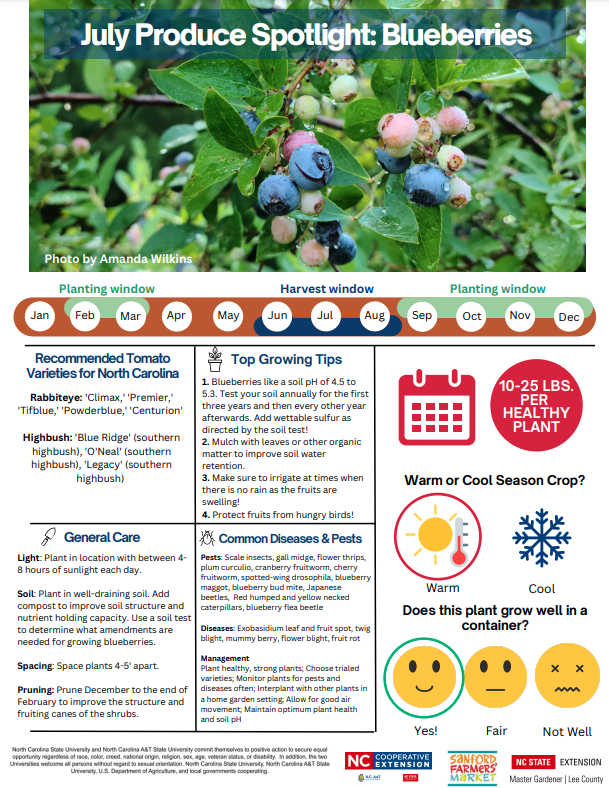
Produce Spotlight & Pollinator Pairing: Tomatoes and Bumble Bees- June 2023
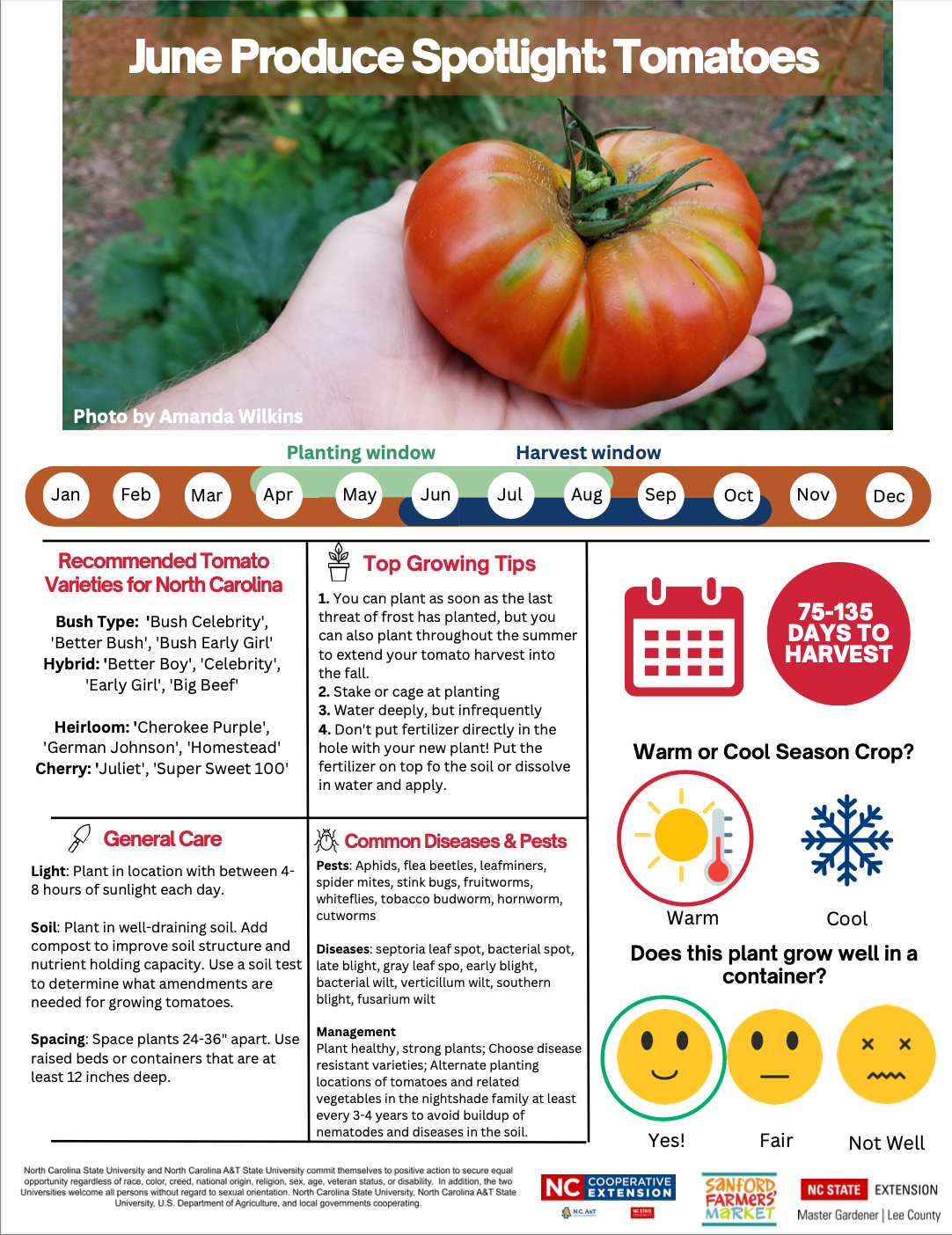
Produce Spotlight and Pollinator Pairing for June 2023- Tomatoes and Bumble Bees





